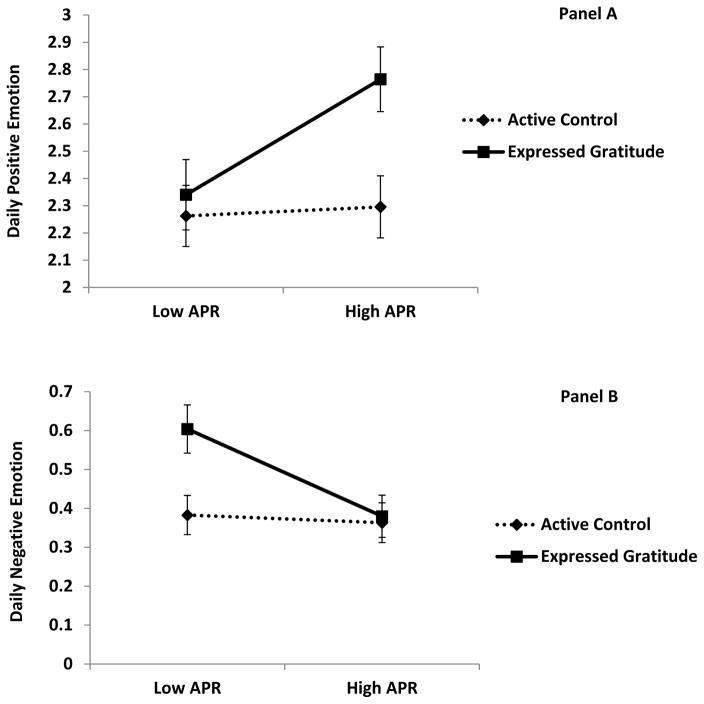Figure 4.
Individual difference in active perceived partner responsiveness (APR) predicting daily positive and negative emotions in two conditions. Range of daily positive and negative emotions scale: [0, 4]. For positive emotions (panel A), pre-tested global partner perceived responsiveness, family income, and race were controlled. Condition × APR interaction: b=.29, p=. 001; simple slope: b=.31, p<.000 for Expressed Gratitude condition, b= .02, p=.544 for Active Control condition. For negative emotions (panel B), pre-tested global partner perceived responsiveness, race, and relationship duration were controlled. Condition × APR interaction: b=−.15, p= .003; simple slope: b= −.16, p< .000 for Expressed Gratitude condition, b= −.01, p=.529 for Active Control condition.

